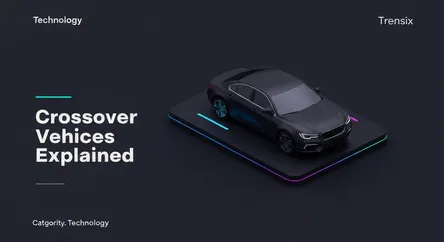Technology
Crossover (CUV) Vehicles Explained

Discover what a Crossover (CUV) is, why it's popular, and how this blend of car and SUV offers efficiency, comfort, and versatile space.
What is it?
A Crossover Utility Vehicle (CUV) is a type of vehicle built on a car platform, combining features of a passenger car with those of a sport utility vehicle (SUV). Unlike traditional body-on-frame SUVs, CUVs use a "unibody" construction where the frame and body are one piece. This design typically results in a lighter vehicle with better fuel economy and a smoother, more car-like ride and handling. CUVs offer the higher seating position, increased cargo space, and often the available all-wheel-drive (AWD) capability of an SUV, making them a versatile choice for many drivers.
Why is it trending?
Crossovers are surging in popularity because they strike a perfect balance for modern consumer needs. They offer the practicality, commanding road view, and perceived safety of an SUV without the typical drawbacks of poor fuel efficiency and truck-like handling. Their versatility makes them ideal for a wide range of activities, from daily city commuting and school runs to weekend getaways. Automakers have responded to this demand by offering a vast array of CUV models in every size and price point, making them one of the most dominant and accessible vehicle segments on the market today.
How does it affect people?
For consumers, the CUV's dominance provides a practical, do-it-all vehicle that fits diverse lifestyles. It has largely replaced the sedan and minivan as the default family car. This shift gives drivers a higher sense of security on the road, thanks to the elevated driving position and AWD options for better traction in poor weather. The unibody construction not only improves comfort and drivability but also contributes to better fuel economy than traditional SUVs, saving owners money at the pump. This combination of space, efficiency, and comfort has redefined what people expect from their daily vehicle.